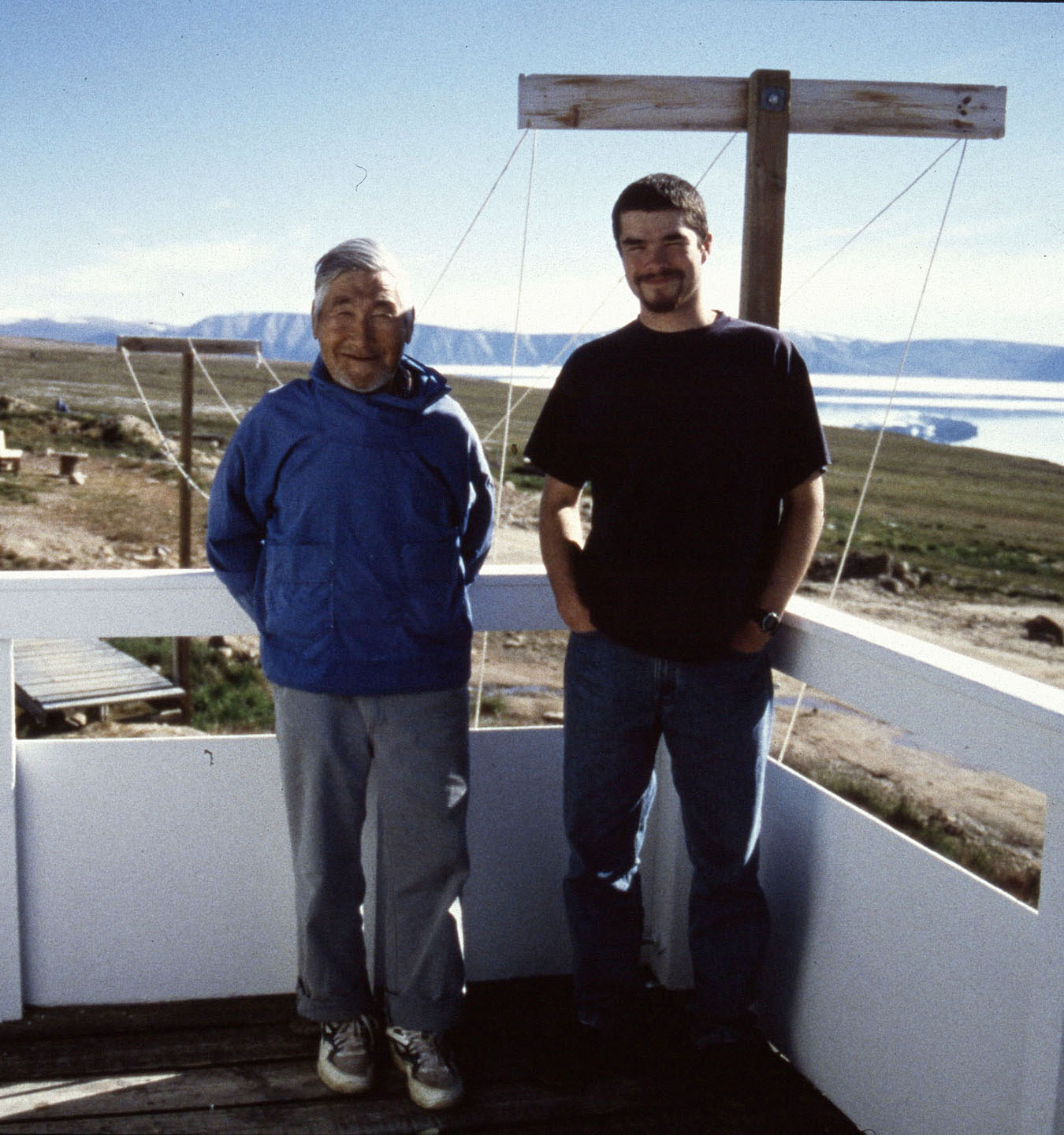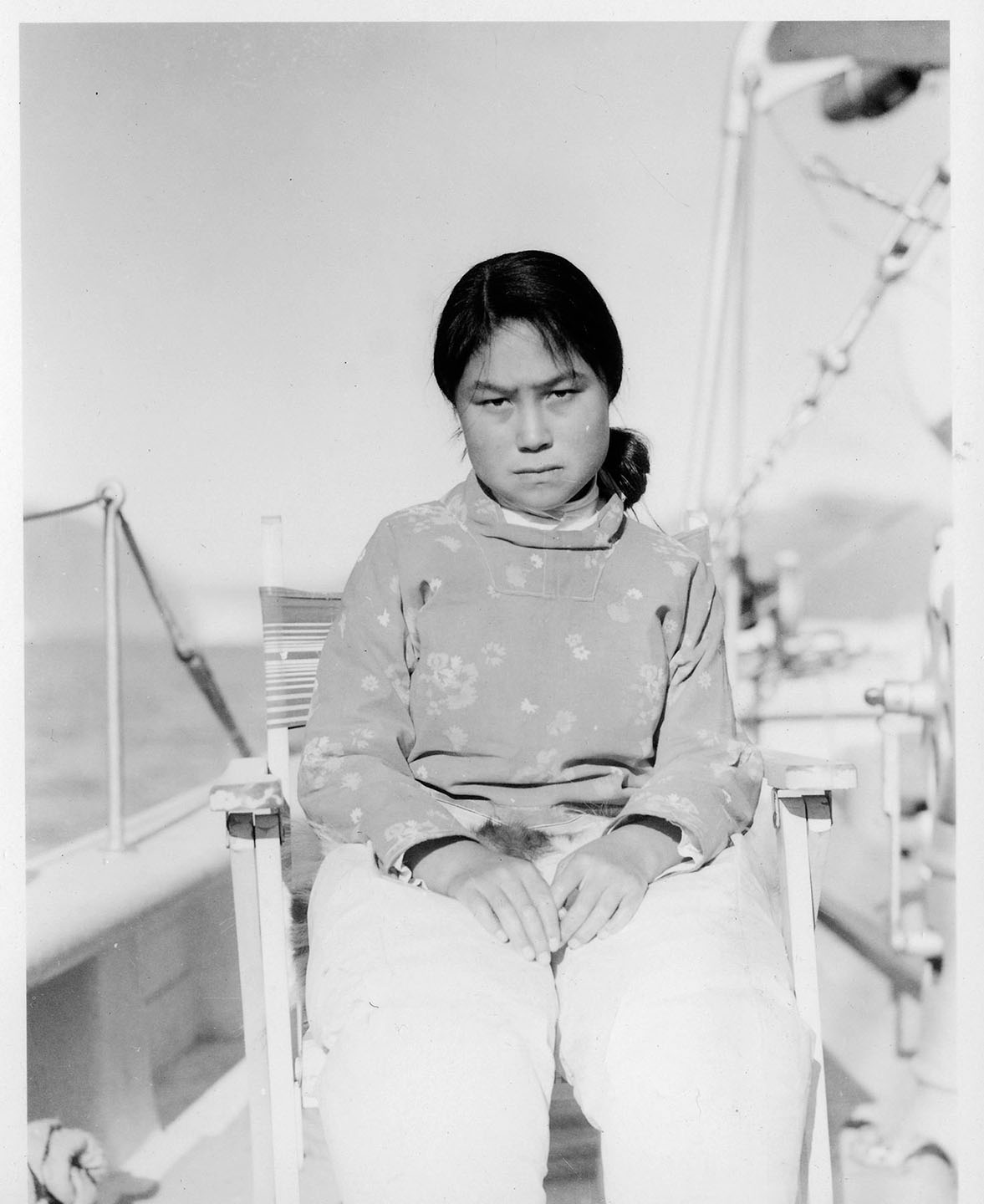Historic Photograph Identification in Qaanaaq (1999)
In the summer of 1999 Curator Genevieve LeMoine, accompanied by Matt Gallon (Class of 2001), traveled to Qaanaaq, in northwestern Greenland, to talk with elders who remembered Donald MacMillan and could identify people in the photographs he took during his many visits to the region.
Over the course of six weeks LeMoine and Gallon worked with interpreters Navarana K’avigak and David Qaavigaq (the daughter and grandson of Amaunalik and Qaavigaq, a couple who had worked with MacMillan in 1923-14), interviewing Inughuit elders. They showed the elders photographs taken by MacMillan and recorded their memories about people, events, and places triggered by examining the images.
The researchers were fortunate enough to speak with people who actually appeared in the photographs as babies and teenagers. Ole Petersen told them about his birth in 1923 at Qamarfit (Refuge Harbor) when his parents were working for MacMillan. He was baptized aboard the Bowdoin. Ole’s cousin, Inatdliaq, was born at Qamarfit a few months later and also appears in MacMillan’s photographs. She told the researchers many stories, including one about an invitation that Donald and Miriam MacMillan made to her family for her to spend a year with them in the United States in 1938. Although her father approved of the idea her mother did not, so she stayed home.
Identifications of individuals, along with contemporary spellings of their names, have been added to the permanent records of the photographs in the Arctic Museum’s database. The researchers also deposited copies of the photographs, along with recordings and typed transcripts of the interviews, with the Qaanaaq Museum. The identifications have enhanced the research potential of the photographic collection and provided the Qaanaaq community increased access to the Arctic Museum’s collection, which documents both community and family histories.
This project was funded by a National Science Foundation, Office of Polar Programs grants 9707905 and 9806760.



